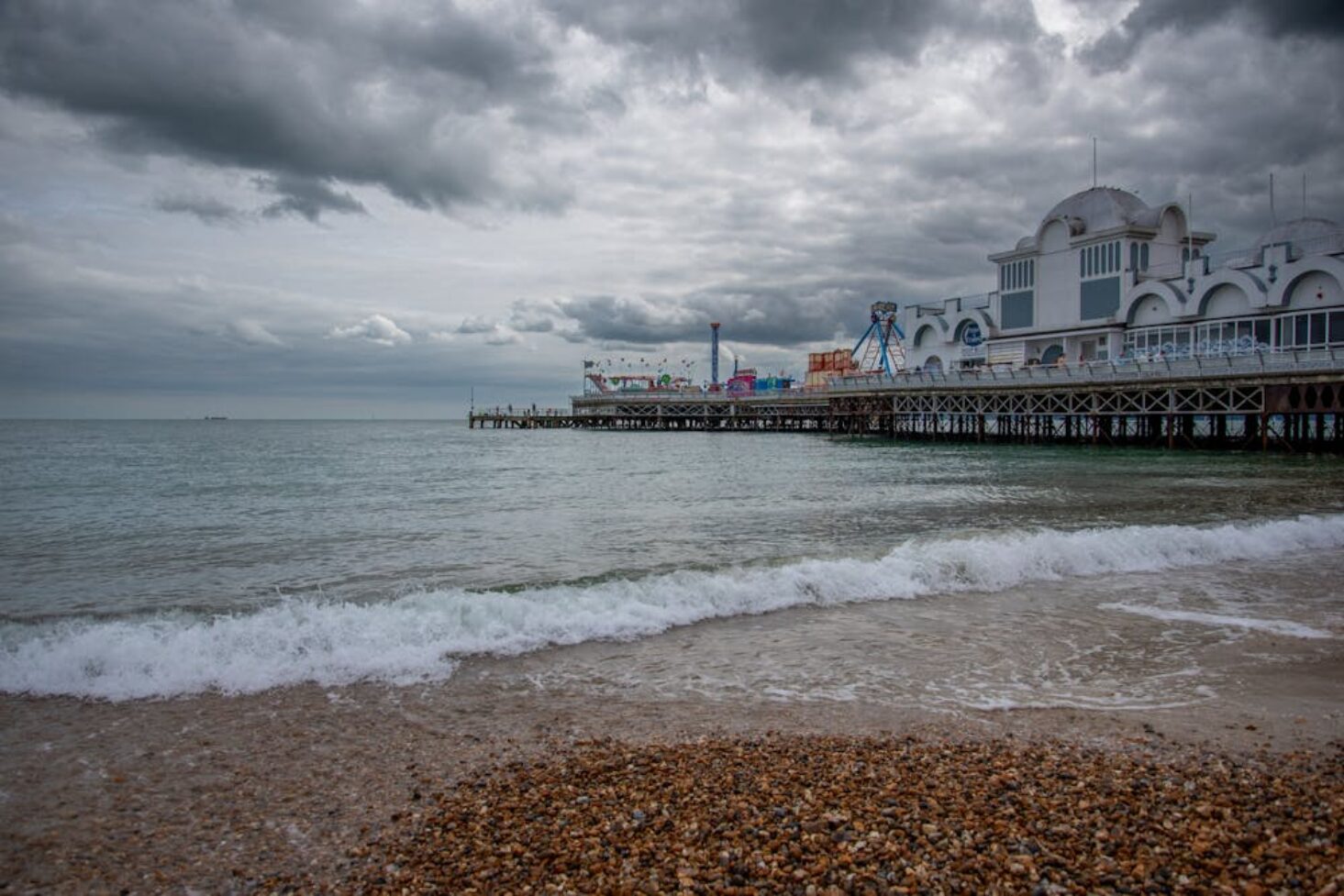
Portsmouth Historic Forts: A Deep Dive Into Coastal Defences
Portsmouth, a coastal city in England, is home to a rich history of coastal defenses and historic forts. These forts played a crucial role in protecting the city and its surrounding areas from potential invasions and attacks. In this deep dive into coastal defenses, we will explore the importance and significance of Portsmouth historic forts, delve into their historical significance and stories, discuss the preservation and restoration efforts, and highlight the experiences and attractions available for visitors today.
The coastal defense system has always held immense importance in safeguarding territories. Coastal forts were strategically built to provide protection and prevent enemy forces from infiltrating through the coast. These forts served as strongholds and observation posts, allowing defenders to monitor and respond effectively to any potential threats.
Portsmouth’s forts hold particular significance in coastal defense due to their strategic location and historical importance. Each fort has its own unique story and architectural marvels that reflect different periods in history. By exploring these forts, we gain insight into the military history and the evolving defense strategies throughout the years.
Fort Nelson, perched high on Portsdown Hill, provides a glimpse into the past with its well-preserved Napoleonic-era fortifications. Fort Brockhurst acts as a guardian preserving military history through its displays and exhibits. Fort Cumberland stands as a strategic defense point, protecting the eastern entrance to Portsmouth Harbor. Lastly, Fort Southwick served as a critical command center during World War II, overseeing the defense of the Solent and the D-Day landings.
These forts witnessed various wars and conflicts, each leaving its mark on the history of Portsmouth. From the Napoleonic Wars to World Wars, the forts played significant roles in defending Portsmouth and its naval base. Noteworthy events and figures associated with these forts add depth and intrigue to their historical importance.
Preserving these historic forts is of utmost importance to maintain their cultural and historical value. Restoration efforts have been undertaken to ensure their longevity and to provide an educational resource for future generations. These efforts come with their own set of challenges and successes, as striking a balance between preservation and accessibility is crucial.
Today, visitors can explore these forts to get a sense of the past and the coastal defense strategies employed. Immersive experiences, guided tours, and educational programs allow visitors to delve into the history and significance of Portsmouth’s forts. The attractions offered by these forts serve as a link to the city’s heritage and provide an opportunity to learn and appreciate their historical and architectural value.
Join us on this journey as we delve into the fascinating world of Portsmouth’s historic forts, exploring their significance, stories, preservation efforts, and the experiences that await visitors today.
Importance of Coastal Defenses
The importance of coastal defenses cannot be underestimated when it comes to safeguarding coastal areas from natural disasters and threats. These defenses serve a vital role in preventing erosion, flooding, and storm damage, ultimately ensuring the safety of communities and infrastructure.
Moreover, they act as a barrier against the impacts of climate change by reinforcing shorelines, constructing sea walls, and implementing dune restoration projects. Additionally, coastal defenses contribute to the preservation of biodiversity by safeguarding coastal habitats.
To maintain their effectiveness and longevity, regular maintenance and monitoring of these defenses are paramount, minimizing the risk of damage and securing the continued safety of coastal areas.
Why Were Coastal Forts Built?
Coastal forts were constructed for several key reasons. They were strategically positioned along the coast to defend coastal regions against potential invasions and attacks from enemy forces. These forts served as a deterrent and a crucial line of defense against enemy ships, providing a vantage point to monitor and control maritime activities.
Their primary purpose was to protect valuable harbors, ports, and trade routes, ensuring the safety of vital economic and military interests. Additionally, forts were built to safeguard the local population and important infrastructure from potential dangers, acting as strongholds during times of conflict. In summary, coastal forts played a critical role in national defense and the protection of coastal territories.
Significance of Portsmouth’s Forts in Coastal Defense
Portsmouth’s forts have always played a significant role in coastal defense throughout history, showcasing the importance of their contribution. These strategically positioned forts were key in safeguarding the coastline from potential invasions and ensuring the safety of the city and its inhabitants.
The design and location of these forts were carefully chosen to form a cohesive defensive network, further emphasizing their significance in coastal defense. Acting as lookout points, artillery batteries, and defensive structures, these forts have stood as a testament to military advancements and their historical importance.
Today, a visit to Portsmouth’s forts not only allows for the exploration of coastal defenses but also offers valuable insights into the history and significance of these structures.
Exploring Portsmouth’s Historic Forts
Get ready to delve into the fascinating world of Portsmouth’s historic forts! In this section, we’ll be exploring these magnificent coastal defenses and uncovering their rich history. From Fort Nelson, offering a captivating glimpse into the past, to Fort Brockhurst, dedicated to preserving military heritage, and Fort Cumberland, a strategic defense point, we’ll take you on a journey through time. And let’s not forget Fort Southwick, the guardian of the Solent. Join us as we uncover the stories and significance behind these remarkable forts.
Fort Nelson: A Glimpse into the Past
Fort Nelson offers visitors a fascinating glimpse into the past as they explore its well-preserved historic grounds. Built in the 1860s, this Victorian fort known as Fort Nelson was part of Portsmouth’s coastal defense system.
It was specifically designed to protect the city’s naval base from potential invasions. Today, Fort Nelson serves as a museum, showcasing a wide range of military artifacts, including cannons, uniforms, and interactive exhibits. Visitors can learn about the fort’s role in various conflicts and get a sense of the daily life of the soldiers who once manned its ramparts.
Pro-tip: Don’t miss the opportunity to witness a live artillery firing demonstration during your visit.
Fort Brockhurst: Preserving Military History
Fort Brockhurst, dedicated to preserving military history, is a significant historic site in Portsmouth. It offers a glimpse into the past and showcases the strategic defense measures employed in coastal regions. The fort, known for preserving military history, played a crucial role in various wars and conflicts, witnessing noteworthy events and figures associated with its historical significance.
The preservation and restoration efforts undertaken at Fort Brockhurst, aimed at preserving military history, are vital to maintaining its importance in history. Today, visitors can explore the fort and engage in guided tours and educational programs to deepen their understanding of coastal defenses and the fort’s role in preserving military history.
Fort Brockhurst, a testament to the military history of Portsmouth, should definitely be on the must-visit list for history enthusiasts, as it is dedicated to preserving military history.
Fort Cumberland: A Strategic Defense Point
Fort Cumberland, known as a strategic defense point, has played a crucial role throughout history. Situated in Portsmouth, this fort guarded the entrance to the city’s harbor and the Solent. Constructed in the 18th century, it served as a key defense against potential invaders and protected the home port of the British Navy.
Due to its prime location, Fort Cumberland enabled precise surveillance and communication. Presently, visitors have the opportunity to explore the fort and gain knowledge about its historical significance through guided tours and educational programs.
The preservation of Fort Cumberland ensures that future generations can fully appreciate the important role it played in coastal defense. Ultimately, Fort Cumberland stands as a testament to Portsmouth’s rich military history.
Fort Southwick: Guardian of the Solent
Fort Southwick, known as the “Guardian of the Solent,” played a vital role in numerous wars and conflicts. Situated in Portsmouth, it was a critical communication center for coordinating and monitoring naval activities in the Solent region. Located atop Portsdown Hill, Fort Southwick offered a strategic advantage, allowing for effective surveillance and interception of potential threats.
Today, visitors can experience the rich history of this fort through guided tours and educational programs. One particularly intriguing tale recounts how Fort Southwick intercepted a German Enigma message, providing the Allies with a significant advantage during World War II.
Historical Significance and Stories
iscover the fascinating historical significance and captivating stories behind Portsmouth’s forts. From their vital roles in numerous wars and conflicts to the notable events and figures intertwined with these formidable structures, this section unveils the rich narratives waiting to be unraveled.
Delve into the annals of history as you explore the indelible mark left by Portsmouth’s forts, shedding light on the past glories and triumphs that have shaped this coastal stronghold.
Role of Portsmouth’s Forts in Various Wars and Conflicts
The forts in Portsmouth have played a crucial role in various wars and conflicts throughout history. They were strategically positioned to defend the coast and protect the city from enemy invasions. Here are some key examples of their involvement:
- The forts played an active role in the Napoleonic Wars, ensuring the safety of Portsmouth’s naval base.
- During World War I, the forts safeguarded the vital Solent waterway and defended against potential German attacks.
- In World War II, they played a significant role in the defense against Luftwaffe bombings and potential sea invasions.
- The forts were operational during the Cold War, protecting against potential Soviet threats.
Fact: Fort Nelson, one of the historic forts in Portsmouth, is home to the Royal Armouries museum and houses a vast collection of artillery and weaponry from different time periods.
Noteworthy Events and Figures Associated with Portsmouth’s Forts
Dive into the rich history of Portsmouth’s forts and discover the noteworthy events and figures that shaped the region. Immerse yourself in Portsmouth’s storied past by exploring the Battle of Trafalgar , where Lord Nelson led the British Navy to victory against the French and Spanish fleets.
Fort Nelson, named after Nelson, stands as a memorial to this legendary figure. Another notable figure associated with Portsmouth’s forts is General James Wolfe, who strategized the successful capture of Quebec during the Seven Years’ War.
Uncover the fascinating stories of Portsmouth’s forts and the prominent figures who left their mark on these iconic landmarks. Experience history come alive by exploring Portsmouth’s historic forts.
Preservation and Restoration Efforts
Preservation and restoration efforts of Portsmouth’s historic forts are critical in maintaining the rich heritage and protecting the coastal defenses. Delving into the importance of maintaining these forts, and exploring the challenges and successes associated with their preservation, this section highlights the ongoing dedication and commitment towards safeguarding Portsmouth’s invaluable fortifications for future generations to appreciate and cherish.
The Importance of Maintaining Portsmouth’s Forts
Maintaining Portsmouth’s forts is crucial for their historical preservation, educational value, and tourism appeal.
- Preservation: Proper upkeep ensures the forts remain structurally sound, safeguarding their architectural and historical integrity.
- Educational value: Well-maintained forts offer educational programs and guided tours, providing insights into coastal defenses and the region’s military history.
- Tourism appeal: Preserved forts attract tourists, contributing to the local economy and promoting cultural heritage.
- Community pride: Maintaining the forts fosters a sense of pride and connection to Portsmouth’s rich history among residents.
By recognizing the importance of maintaining these forts, efforts can be made to ensure their continued contribution to the community.
Challenges and Successes in Preserving the Forts
Preserving Portsmouth’s historic forts comes with its fair share of challenges and successes in preserving the forts. Maintaining these structures requires significant resources, both financial and human, as they are vulnerable to decay and natural elements.
With dedicated efforts, many of these forts have been successfully restored and preserved for future generations to appreciate. Challenges in preserving the forts include securing funding, addressing structural issues, and implementing effective conservation methods.
On the other hand, successes can be seen in the restoration work done on forts like Fort Nelson, Fort Brockhurst, and Fort Cumberland. These preserved forts serve as a testament to the challenges and successes in preserving the forts, as well as their historical significance.
Additionally, they contribute to the educational and cultural value of the region.
Exploring Portsmouth’s Forts Today
Immerse yourself in the captivating world of Portsmouth’s historic forts as we delve into what makes these coastal defenses a must-visit today. Discover the enchanting visitor experiences and attractions that await, as well as the engaging guided tours and educational programs available.
Prepare to be transported back in time and unravel the intriguing stories behind these remarkable structures. So, grab your sense of adventure and let’s embark on a journey through Portsmouth’s forts like never before.
Visitor Experience and Attractions
When exploring Portsmouth’s historic forts, visitors can expect a rich and immersive visitor experience and attractions. The forts not only offer a glimpse into the past but also provide various attractions for visitors of all ages. Some notable visitor experiences include guided tours, interactive exhibits, and educational programs that delve deeper into the history and significance of coastal defenses.
For those interested in military history, the forts offer a chance to explore strategic defense points and learn about their role in various wars and conflicts. With a blend of history, education, and entertainment, Portsmouth’s historic forts provide a truly captivating visitor experience and attractions.
One fascinating true story highlights the visitor experience at Fort Nelson. During a guided tour, a visitor discovered that their great-grandfather had served as a soldier at the fort during World War II. This personal connection deepened their appreciation for the fort’s history and the sacrifices made by their ancestor.
It is stories like these that make the visitor experience at Portsmouth’s historic forts even more memorable and meaningful.
Guided Tours and Educational Programs
Guided tours and educational programs offer visitors the opportunity to delve deeper into the rich history and significance of Portsmouth’s historic forts.
- Guided Tours: Knowledgeable guides provide informative and engaging experiences, offering insights into the forts’ architecture, strategic value, and historical events.
- Educational Programs: Schools and educational institutions can take advantage of specially designed programs that provide hands-on learning experiences and interactive workshops.
- Interactive Exhibits: Many forts feature interactive exhibits, allowing visitors to participate and experience what life was like for soldiers and civilians during various periods of history.
- Workshops and Demonstrations: Through workshops and demonstrations, visitors can learn about the weapons, tactics, and technologies used in coastal defense.
Fact: Portsmouth’s historic forts attract thousands of visitors each year, eager to explore and learn about the fascinating stories and history behind these coastal defenses.
Frequently Asked Questions on Portsmouth Historic Forts
1. What are some of the historic forts in Portsmouth?
Some of the historic forts in Portsmouth include Fort Sullivan, Fort McClary, Portchester Castle, Southsea Castle, Fort Pepperrell, Fort William and Mary, Fort Washington, and Battery Cumberland.
2. When were the first fortifications built in Portsmouth?
The first fortification in the area was Portchester Castle, dating back to the Roman era. The first recorded fortifications on Portsea Island were a wall constructed in 1212 around a shipyard.
3. What defensive measures were taken in Portsmouth during the 14th century?
During the 14th century, Portsmouth faced several attacks and simple earthworks were constructed in response.
4. How did the fortifications in Portsmouth evolve during the reign of Henry VII?
Under Henry VII’s rule, the Round Tower was rebuilt in stone and the Square Tower was added. Southsea Castle was also built by Henry VIII.
5. What were the Harbor Defenses of Portsmouth in the United States?
The Harbor Defenses of Portsmouth was a United States Army Coast Artillery Corps command that operated from 1900 to 1950. It was responsible for coordinating the defense of Portsmouth, New Hampshire and the nearby Portsmouth Naval Shipyard in Kittery, Maine.
6. How did the fortifications in Portsmouth continue to evolve over time?
The fortifications of Portsmouth have continued to evolve and expand over the centuries, with updates to the ramparts, development of bastions, and the addition of stone walls.





